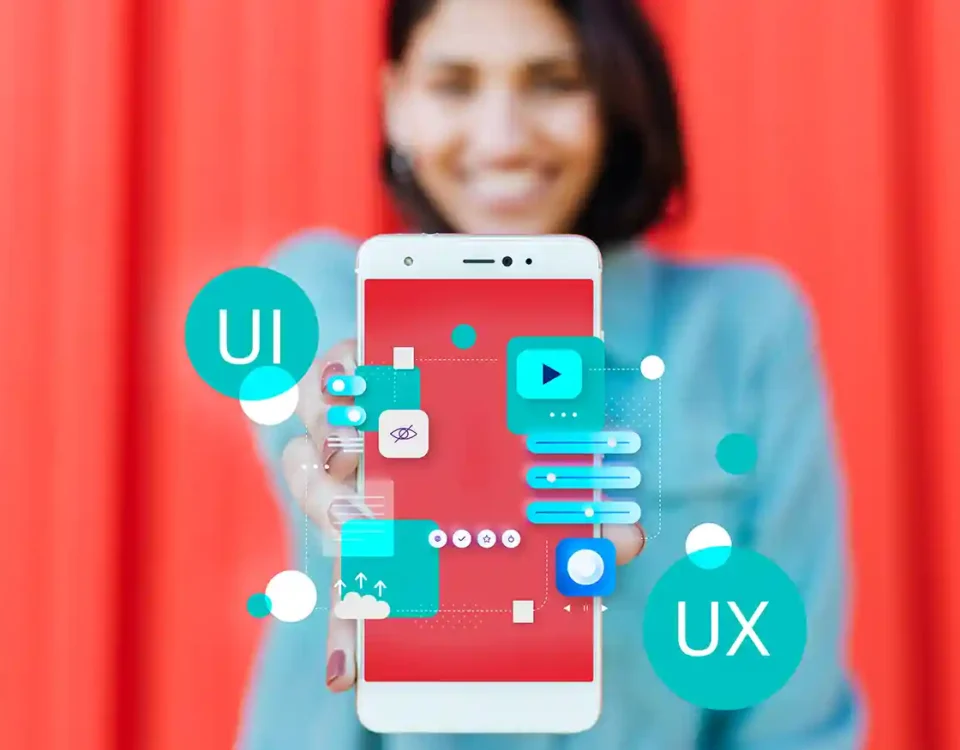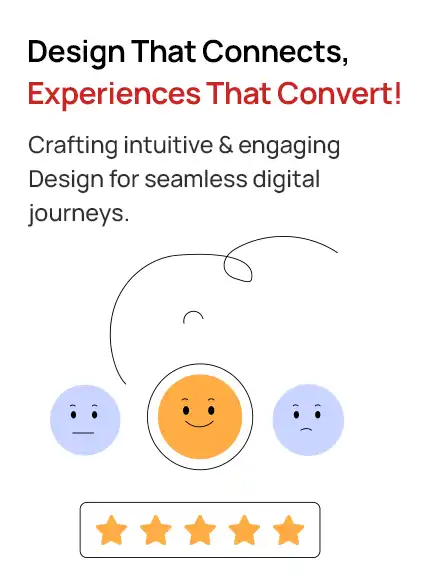
The Ultimate Guide to Pitch Decks for Startups
July 16, 2025
How Strong Hospital Branding Influences Patient Decisions
July 19, 2025
The Ultimate Guide to Pitch Decks for Startups
July 16, 2025
How Strong Hospital Branding Influences Patient Decisions
July 19, 2025The Role of a UI UX Consultant in Modern Product Design
July 18, 2025
- 18 min to Read
Introduction
Did you know that A single bad user experience is enough to drive 88% of visitors away for good.
And that number is only rising as digital expectations skyrocket. In a world filled with apps, platforms, and websites competing for attention, the difference between user delight and user drop-off often lies in UX — and more importantly, in the hands of a skilled UX Consultant.
Modern product design is no longer about just looking good. It’s about feeling right. It’s about creating experiences that are functional, emotional, and frictionless — and that’s precisely where a UX Consultant makes all the difference.
In this blog, we’ll explore the critical role of a UX Consultant in product development, how UX consulting services work, and why their strategic input is a game-changer — From launching your first MVP to scaling a full-blown digital business...
Who Is a UX Consultant? (And Why They're Not Just Designers)
When people hear “UX Consultant,” they often think of someone who makes interfaces pretty. But this perception misses the real value. A UX Consultant is a strategic partner. They blend psychology, design thinking, and data to craft intuitive user journeys that align with business goals.
While a designer may focus on UI elements and usability, a UX Consultant dives deeper:
- Why are users dropping off at this point?
- What pain points exist in the current flow?
- How can we simplify decision-making for the user?
- Is the experience inclusive and accessible?
The Evolution of Product Design (and Where UX Consultants Fit In)
The digital product space has evolved massively:
- In the 2000s, flashy design was king.
- 2010s brought responsive and mobile-first thinking.
- Now in 2025, it’s all about human-centered, data-informed experiences.
Products aren’t just tools — they’re companions in our daily lives. Whether it’s a fintech app helping someone budget or a healthcare platform guiding patients, products today must speak the user’s language.
That’s where a UX Consultant steps in — helping businesses shift from guesswork to experience-first design, from surface-level aesthetics to meaningful engagement.
What Exactly Does a UX Consultant Do?
Let’s break down the key responsibilities of a UX Consultant in practical, human terms:
1. Research What Matters
They don’t assume what users want — they ask. Through interviews, usability tests, surveys, and analytics, they gather insights that guide product decisions.
2. Define User Personas & Journeys
They create realistic user profiles and map out journeys to understand where users succeed — and where they get frustrated.
3. Audit Existing Experiences
Have an app that users don’t love? A UX Consultant performs a UX audit — evaluating structure, flow, and emotional impact — then recommends improvement strategies.
4. Prototype & Validate Ideas
They bring ideas to life with wireframes and clickable prototypes, then test them with real users to get feedback before coding begins.
5. Collaborate Across Teams
They work with PMs, developers, marketers, and designers to ensure everyone’s working toward a unified, user-first goal.
This comprehensive process is what sets them apart from typical design roles. They focus less on “how it looks” and more on “how it works for real people.”
Why UX Consulting Services Are Crucial for Modern Products
You wouldn’t build a house without a blueprint. So why build digital products without understanding user needs?
Here’s what ux consulting services bring to the table:
User-Centered Clarity
Successful products aren’t built on assumptions — they’re built on insight. When you truly understand your users, you can design experiences that make sense to them. Instead of packing in features because “everyone else is doing it,” you focus on what your audience actually needs.
That clarity brings focus to your product roadmap and eliminates confusion during development. You’re not just building for users — you’re building with them in mind. The result?
Happier customers, cleaner workflows, and a stronger connection between your product and the people using it every day.
Fewer Costly Rebuilds
Fixing a broken experience after launch is like renovating a house you just built — it’s stressful, expensive, and avoidable.
When you bring in user insights early, many issues can be caught before they become expensive problems. Instead of investing time and money into rework, you build a stronger foundation from the start. Early testing and feedback loops help refine ideas long before code is written. You save resources, reduce back-and-forth, and move faster with confidence.
Designing with foresight helps your team avoid the trap of “build first, fix later” — and that’s a game changer.
Higher Conversion & Retention
A smooth, intuitive experience can quietly lead users exactly where you want them to go. Whether it's completing a sign-up, making a purchase, or coming back to explore more, a well-designed journey builds trust at every step. When people find it easy and enjoyable to use your product, they stick around longer and engage more.
This isn’t about flashy visuals — it’s about clear flows, helpful content, and minimal friction. The right design choices can turn casual visitors into loyal users and one-time buyers into long-term fans. Good experience design isn’t just user-friendly — it’s business-friendly.
Accessible, Inclusive Design
Digital products should work for everyone — regardless of ability, age, or background.
Accessibility isn’t just about checking boxes; it’s about making sure no one feels left out. Clear text, keyboard-friendly navigation, thoughtful color choices — these simple considerations make a huge difference.
Inclusive design respects the diversity of your users and ensures that all people can interact with your product comfortably. It also signals something powerful about your brand: that you care. When accessibility is built into your design approach from the start, your product becomes not only more ethical — but more usable for everyone.
Cross-Functional Harmony
Building great products takes more than just designers. Developers, product managers, marketers — everyone brings something vital to the table.
But without a shared understanding of the user’s needs, teams can quickly fall out of sync. A user-first design process helps bring clarity to the chaos. It creates a shared language and vision that aligns every role toward the same outcome. With clear communication and thoughtful collaboration, teams move faster and make smarter choices.
When everyone’s on the same page, work flows better, ideas evolve more easily, and the final product feels cohesive — not cobbled together.
Hiring a UX design consultant is like hiring a compass in the storm — especially in competitive markets where user trust is everything.When Should You Hire a UX Consultant?
It’s a common misconception that UX Consultants are only for big companies or late-stage products. In reality, they’re valuable at any stage, especially when:
- You’re building a new product or MVP
- Your app is getting users, but losing them quickly
- Teams are arguing over design decisions
- You’re launching in a new market or vertical
- You want to improve accessibility or meet compliance standards
How UX Consultants Work With Your Team
One of the most underrated strengths of a UX Consultant is their ability to integrate into existing workflows.
Here’s how they usually collaborate:
| Team | What UX Consultant Does |
|---|---|
| Product Team | Aligns on goals, defines KPIs, maps user journeys |
| Developers | Ensures technical feasibility, designs for dev-ready handoff |
| Marketing | Creates seamless conversion experiences |
| QA Team | Helps define usability acceptance criteria |
| Founders/Execs | Provides strategic direction, prioritization clarity |
UX Consultant vs. UI Designer: What’s the Real Difference?
Let’s address the elephant in the room.
| Role | Focus | Tools | Outcome |
|---|---|---|---|
| UI Designer | Visual design (colors, typography, layouts) | Figma, Sketch | Beautiful screens |
| UX Consultant | Strategy, behavior, structure | Research tools, wireframes, analytics | Effective experiences |
One designs how it looks. The other ensures why it works. For best results, you need both — and they should work in harmony.
But if you only have the budget or timeline for one, investing in UX consulting services early saves more downstream cost and stress.
A Quick Case: What a UX Prototyping Consultant Can Do
Imagine you’re a SaaS startup launching a new B2B tool. You’ve got devs, a UI designer, and even a basic feature set.
But early users are confused. They don’t complete onboarding. And feedback says the flow is “complicated.”
You bring in a ux prototyping consultant for a 3-week sprint.
What They Do:
- Conduct user testing on the current flow
- Identify friction in onboarding and task completion
- Rewire the navigation structure
- Design a streamlined, interactive prototype
- Validate it with 10 real users
Result? Your dev team builds based on tested flows. No more guesswork. Your product gains traction with fewer revisions.
What to Expect From a UX Consultancy Engagement
Working with a ux consultancy doesn’t have to be a black box. Here’s a typical process:
1. Discovery & Goal Setting
Clarify the business model, users, and challenges.
2. UX Research
Gather real data via interviews, surveys, and heatmaps.
3. UX Audit or Design Sprint
Assess existing journeys or explore new ones with prototypes.
4. Wireframing & Flow Mapping
Create clear user flows and early visuals.
5. Prototyping & Testing
Build interactive mockups and test with real users.
6. Handoff & Metrics Planning
Deliver everything with documentation, KPIs, and training.
Every good ux design consulting firm adapts this process to fit your needs — whether it's a 2-week sprint or a 3-month deep dive.Why the Human Side of UX Matters More Than Ever
In an age of AI and automation, the human side of product design is your competitive advantage.
- Users want empathy, not complexity.
- They want guidance, not feature overload.
- They want inclusion, not one-size-fits-all interfaces.
Conclusion: A UX Consultant is the Missing Link to Product Success
We live in an era where users won’t tolerate poor experiences. Your product may have all the right features, but if users feel confused, ignored, or frustrated — they’ll leave. Fast.
A UX Consultant doesn’t just design. They translate complexity into clarity. They act as a bridge between people and technology, ensuring that your product doesn’t just function — it connects.
At Upclues, we understand the power of great UX. As one of the leading ux consulting firms, we help startups and enterprises deliver thoughtful, strategic, and scalable digital experiences. Whether you need a one-time UX audit or ongoing support from a trusted UI UX Design Agency, we’re here to guide you.
Explore our UI UX Design Services and let’s design something meaningful — for your users, your team, and your future.
Create Intuitive, Modern Interfaces – Work With an Expert
Start with Upclues and experience the power of impactful visual storytelling!





